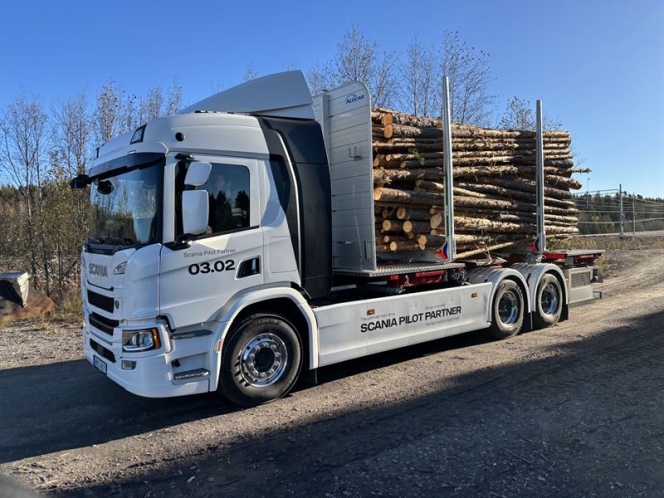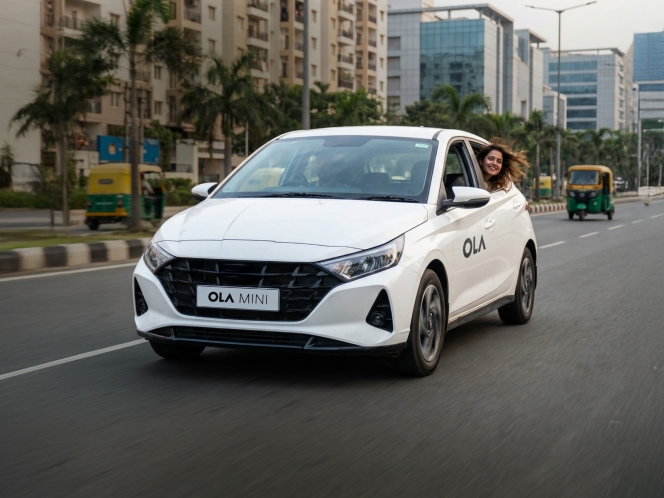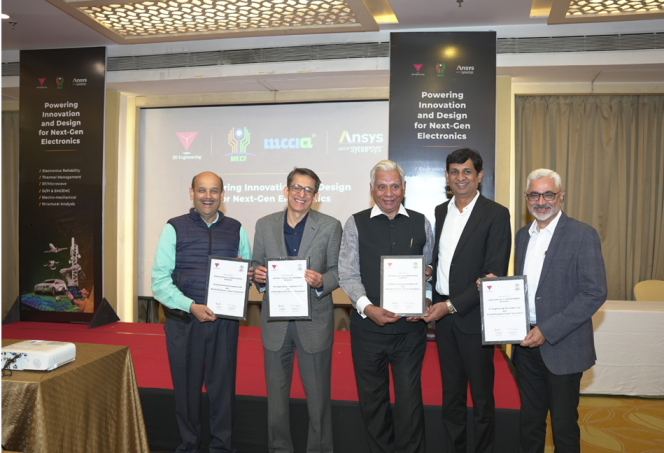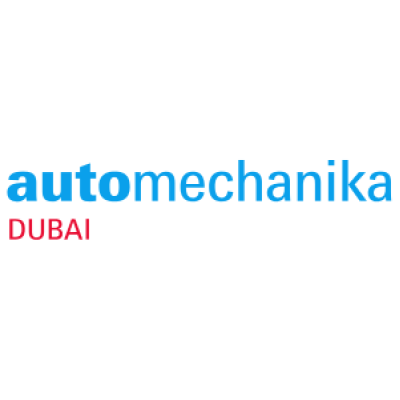Making vehicles (SaaS)y
- By Juili Eklahare
- October 07, 2022

There are increasing software components to vehicles, with new intelligence being added and them getting more sophisticated. SaaS is a way to deliver the software, and we are seeing more software in the automotive industry. Venkat Nathan, Founder and CEO, Nesh LIVE, talks to us about the start-up’s transition to a vehicle connectivity solutions company, their USP and more.
While we see large players like Tesla choosing to build their vehicle connectivity solutions inhouse, SaaS could be the way to go for medium to small players in the automotive OEM space to enable these solutions. However, they may need to approach companies that offer full-stack SaaS solutions for vehicle connectivity to compete with the large players.
One such company is Nesh LIVE, which provides SaaS solutions for vehicle connectivity and was selected by Stanford University as one of the promising start-ups in India under the Seed Transformation Programme in 2017, and has close to about 100,000 vehicles in its system. Moreover, the start-up has been working with vehicle manufacturers for close to five years now.
“Our solutions are deployed at leading truck, bus and off-road vehicle manufacturers. Besides this, we are also working with electric vehicle (EV) manufacturers right now,” says Venkat Nathan, Founder and CEO, Nesh LIVE. “We are working towards helping these manufacturers extract, transfer and analyse battery and vehicle data in the cloud. This in turn is the bedrock for any mobility – that bedrock is quality data, and quality data comes with connectivity right at the production line and the latest sensors supporting the extractions. So when a vehicle is born, the sensors are put in right at the time of its birth as an OEM fitment rather than leaving it to the customer to buy it as an aftermarket fitment.”
The three-dimensional way
Nesh LIVE’s specialisation is that it works with manufacturers early on and tries to integrate its products into the manufacturing line. That way, the whole ecosystem benefits from quality data. In order to build intelligent insights on data, connectivity has to have all the dimensions, from vehicle data to user-behaviour to the environment. The start-up attacks the automotive OEMs’ problems in this three-dimensional way. Doing this provides insights not just for the manufacturers but for the entire network – everyone in the chain is allowed to see and access information that they are allowed to see and access.
The rating system
“Today, we collect close to 100 million data points a day. Nesh LIVE also provides rating systems for the vehicle as a feature, based on the data they get,” says Nathan and goes on, “This rating is useful for the fleet owner.”
The rating system is provided for the vehicle and drivers, and now Nesh LIVE will be extending very similar algorithms for battery rating of electric vehicles. There are a number of applications for battery rating; for one, it helps the user understand the health of the battery. And secondly, as these batteries come up for reuse in other sectors, the grading system will help decide their afterlife in the long run. In fact, the vehicle rating system helps people anonymously compare their own vehicles within their own fleet and other fleets as well.
“In summary, we identify what data is needed and work with the automotive manufacturers. We then extract that data and send it to the cloud. Once that data is sent to the cloud, we run a lot of analytics in the cloud and then provide insights to different stakeholders,” Nathan makes clear.
Nesh LIVE’s SaaS solution – from ICEs to EVs
Some aspects of the SaaS feature are common, while some are industry-specific. “For instance, bus manufacturers want to know when the bus shows the pick-up location in advance. While all applications need to be highly accurate, the accuracy requirements in the bus segment are much higher within SaaS,” Nathan tells us and goes on, “However, in case of construction equipment like earth movers, for instance, there is greater importance to monitoring its working hours rather than accuracy of its location since it is mostly restricted to select zones. Hence, there are small variations from segment to segment. Even EVs have some variations that we are addressing right now.”
Elaborating further on this, Nathan says, “The EV industry is very interested in having a lot of analytics on battery, especially the charging and discharging cycles and health of the battery. This in turn impacts the range of the vehicle, and the range of a vehicle is dynamic. The dynamic range prediction needs to take into account, along with the driver behaviour, such as braking and speed, the usage of the vehicle, the environment, the road surface etc.”
“The SaaS offerings include the mobile app for the driver. For example, the driver gets push notifications based on what we see in terms of his/her handling the vehicle, the way he/she drives, the battery being due for service etc. Besides, we also educate and engage the user for best practices of the EV vehicle,” he adds.
From mobile applications to vehicle connectivity solutions
In fact, Nesh LIVE was initially into building mobile applications for the fleet industry when the product was launched in 2015, before venturing into vehicle connectivity solutions. However, the transition wasn’t too difficult as the two fields are very related, Nathan claims. He asserts, “When we started back in 2015, we started with applications on the phone, predominantly focused on the driver dimension. We provided the driver with an app, like Ola or Uber do today, and basically tracked the phone. The industry had just begun to explore other forms of connectivity of tracking a vehicle back then. So what started in 2015 as GPS tracking and reporting has slowly morphed into a huge vehicle intelligence and analytics platform.”
GPS tracking was, in truth, seen as a low-end commodity product back in 2015. “So when we approached large automotive suppliers with our solution, they approached it cautiously,” Nathan tells us and continues, “However, we had to really convince them that while today it is only GPS, tomorrow it will be the black box of the vehicle – like the Wi-Fi of a house – enabling connectivity and becoming the point of access to the internet.”
Therefore, while the transition for the company from a technical perspective wasn’t much, convincing customers to adopt the technology and telling them that it would morph into providing intelligence for the vehicle and improving its efficiency and safety was difficult back then. “However, we saw the perspective change after 2019. Today, the end-user wants intelligent insights,” Nathan explains.
He further adds that Nesh LIVE has also created virtual sensors that direct the load of the vehicle. “We can tell if a vehicle is travelling with or without load by algorithms. This has further increased the utilisation of the vehicle,” he informs.
Reinventing and staying ahead
While the start-up has come a long way since its inception, it has to face competition like any other organisation and industry. Nathan cites that Nesh LIVE has competition at two levels – the IoT level and the transporter level.
“The IoT-level competition is quite generic and not focused on automotive; data is collected from any industrial equipment, is processed and analytics on it is provided. It is very broad-based,” he explains and goes on, “On the other hand, Nesh LIVE is very automotive-niche; we have people with experience in automotives and we have worked with automotive companies for nearly seven years. Therefore, we have built up a lot of domain knowledge that comes in handy to provide advanced analytics.”
“At the transporter level, one will find companies providing good GPS tracking solutions to transporters. These competitors are at the transporter level, meeting their respective needs,” Nathan further explains.
Coming to where Nesh LIVE stands out, Nathan highlights, “Our start-up does not provide just for the transporters. Our USP is that we provide a lot of features for the auto manufacturer, including the dealers and service network of the manufacturer. And all of this is automated as a production line fitment at the manufacturing line. So we try to stay ahead by being domain-focused and being a very holistic end-to-end player for the ecosystem – not just for the transporter.”
But staying ahead of the competition is not enough. Nesh LIVE has also been constantly working on enhancing its SaaS platform. The start-up invests 20-30 percent into new R&D initiatives of SaaS and is continuously improving. In fact, it has customers in Canada and has ongoing trials in Dubai and the US. Moreover, it has already run some trials in Nigeria.
Cater to the automotive ecosystem
Today, it’s all about providing intelligent insights, which has been a pull from the end-users themselves. The end-users want to increase their vehicle utilisation and get more revenue out of it. What’s more important is that the software architecture has to show agility for the vehicle from the very first day. Therefore, SaaS technology will not only improve the safety but also the efficiency and operation of every vehicle, and last but not least, help cater to the automotive ecosystem.
- Scania
- Horse Powertrain
- SCA
- hybrid truck
- Aurobay Technologies
- Matias Giannini
- Tony Sandberg
- Ingo Scholten
Scania Selects Horse Powertrain For Range-Extender Truck Pilot In Sweden
- By MT Bureau
- December 03, 2025

Horse Powertrain has been selected by Scania to provide its range-extender system for a pilot vehicle, currently operating as a heavy-duty timber truck in Sweden. The collaboration is a step in testing hybrid powertrain solutions for demanding transport applications such as forestry logistics.
The pilot is part of the Scania Pilot Partner program and is currently operating in Sweden under SCA, one of Europe’s forestry companies.
The vehicle is built to handle Sweden’s timber routes, transporting heavy loads through remote terrain where access to charging infrastructure remains scarce. By combining a battery-electric drivetrain with the generator designed in Sweden by Horse Powertrain’s division Aurobay Technologies, the truck achieves both long-distance capability and reduced CO2 emissions.
The test route covers approximately 16 km, with an operational target of completing 7–8 rounds per day, comparable to a diesel truck.
The configuration supports the truck’s battery packs with a 120 kW range-extender unit based on Horse Powertrain’s 2.0 litre multi-fuel engine. Acting purely as an onboard charger, the unit supplies electric energy when required during long hauls, temperature extremes, or delays.
Matias Giannini, CEO, Horse Powertrain, said, "Forestry logistics represents one of the toughest challenges for electrification. The forest roads of northern Sweden demand strength, range and reliability. Charging stations are few, but the timber never waits. You can think of our range-extender as a powerbank for a heavy-duty truck: silent, efficient, and always there when you need it. By partnering with Scania and drawing on our engineering excellence, we’re proving how a compact, high-efficiency range-extender enables electric trucks to operate reliably in the most demanding environments. It’s a technology that cuts CO2 now.”
Tony Sandberg, Vice-President at Scania Pilot Partner, added, "What we’re doing in Sweden with Horse Powertrain and SCA builds directly on the 100-day trial we ran together with a logistics partner in Germany earlier this year. That vehicle logged almost 22,000 kilometres and drove more than 90 percent of the time on pure electric power, only using the range-extender when no charging was available. The result was a CO2 reduction of over 90 percent compared with a diesel truck. Those learnings give us a strong foundation as we tailor the system for demanding Nordic timber operations."
Ingo Scholten, Chief Technology Officer, Horse Powertrain and Managing Director Sweden, Aurobay Technologies division, said, “Electrifying heavy-duty routes means understanding what drivers and operators face hour by hour. Long stretches without charging, variable loads and rapidly changing weather. This pilot lets us study those realities directly in day-to-day timber operations. The range-extender’s role is simple. Provide a stable, efficient energy supply so drivers can complete their full shift without interruption and with far lower greenhouse-gas emissions than a traditional diesel truck. The data we gather here will guide how we refine the technology and scale it for wider use across demanding transport applications.”
Horse Powertrain’s modular range-extender architecture builds on the core technology used in its passenger-car and light-commercial hybrid systems, adapted for the higher power output and durability demands of heavy-duty applications. Unlike conventional fixed-speed generator sets, the engine can operate across its full power band, allowing the system to deliver the required output efficiently while keeping fuel consumption, noise and vibration low.
The pilot truck is now undergoing testing in regular operations, carrying full timber loads to gather performance and efficiency data in real-world conditions. The results will guide future deployments of electrified powertrains in the forestry sector and other heavy-duty applications.
Maruti Suzuki Launches One India, One EV Charging Platform
- By MT Bureau
- December 03, 2025
Maruti Suzuki India, the country’s largest passenger vehicle maker, is gearing up to mark its entry into the electric vehicle segment with the soon-to-be-introduced e Vitara has announced an EV ecosystem with a comprehensive end-to-end digital platform for charging needs, including home and public charging, with an integrated payment journey.
The company has signed collaboration agreements with 13 Charge Point Operators (CPOs) and aggregators to provide seamless charging experiences on a single platform.
Maruti Suzuki has established a network of over 2,000 exclusive charging points across its nationwide dealer network, spanning more than 1,100 cities. Customers’ charging needs are further supported by the extensive partner-operated all-India charging network.
Aligned with its global vision, Maruti Suzuki will work with its partners to enable more than 100,000 Public Charging Points by 2030.
Hisashi Takeuchi, Managing Director & CEO, Maruti Suzuki India, said, “At Maruti Suzuki, we strive to extend a delightful ownership experience to our customers to build lasting trust. Today, we are taking a historic step, as we enter the domain of electric mobility with full readiness to address the EV charging concerns and boost customer confidence. We have established a robust network of over 2,000 Maruti Suzuki exclusive charging points across our sales and service network, spanning more than 1,100 cities. Further, we have collaborated with 13 Charge Point Operators to offer access to a vast charging infrastructure across the country. Aligned with Suzuki’s global vision, we plan to introduce multiple EVs and to support this, our aim is to enable a network of over 1 lakh charging points across India by 2030, along with our Dealer and CPO partners.”
'E for Me' Digital Platform
The Maruti Suzuki ‘e for me’ EV charging mobile app enables end-to-end usage of EV charging points from partner-operated charging points and Maruti Suzuki’s own network on a single platform.
The app offers a uniform customer journey for EV charging and payment through UPI or exclusive ‘Maruti Suzuki Money’, powered by Razorpay.
The platform's functions include:
- Locate, Pay & Use EV charging points available on the app.
- Use Public and Smart Home Charger from the same app.
- One card for ‘Tap N Charge’ functionality at Maruti Suzuki dealer outlets and home charger.
- Mirror e for me app on the infotainment system for seamless in-car EV charging experience.
- Remotely start/stop and manage the power output of the smart home charger.
Partho Banerjee, Senior Executive Officer, Marketing & Sales, Maruti Suzuki India, said, “Today is the dawn of a new era for electric mobility in India. It gives me immense pleasure to say that Maruti Suzuki is EV ready and will be ‘By Your Side’ with our comprehensive new platform that addresses key concerns around EV charging infrastructure. Leveraging India’s largest dealer network and our charging partners’ network, we are ensuring there are EV charging points at an average distance of 5-10 kilometres at key locations in the top 100 cities of India. DC fast chargers are also located at regular intervals along key highways to enable nationwide driving freedom for our prospective EV customers. To further enhance peace of mind, we have deployed a 1.5 lakh-strong specially-trained EV workforce to cater to every need of our customers. We have also activated 1500+ EV-ready service workshops across 1100 cities for meeting after-sales requirements to support EV ownership in every part of the country.”
To showcase the network readiness, four e VITARAs were flagged off from Gurugram in all four directions – Srinagar (North), Kanyakumari (South), Bhuj (West) and Dibrugarh (East) – as a part of the ‘e drive’.
The e Vitara Born EV, which is ‘Made-in-India and exported around the world,’ has been rigorously tested over 10 million test kilometres. Tested from ‘Sand to Snow’ over a temperature spectrum of 60deg Celsius to -30deg Celsius, the e Vitara has delivered a driving range of 543 km.
Banerjee added: “Words aside, we are showcasing the prowess of this platform by flagging off a radical ‘e drive’ that will demonstrate the real-world efficacy of Maruti Suzuki’s comprehensive EV charging network. With the ‘e drive’, we aim to boost user confidence and execute faster EV adoption, working alongside the nation’s sustainability goals for net zero.”
Ola Intros Non-AC Cab Options On Its Platform Across India
- By MT Bureau
- December 02, 2025

Bengaluru-based ride-hailing company Ola Consumer has launched its non-AC ride category across India, becoming the only player in the country to offer this option at scale.
The company stated that the goal is to offer customers maximum choice across various price points to meet their travel needs. The new category will also enable cab drivers to have lower fuel consumption and improve their earnings.
Ola Consumer spokesperson said: “With the non-AC category, we’re pushing the boundaries of how affordable and accessible urban mobility can be in India. Millions of people rely on daily, value-driven transport, and this offering is built entirely around their needs. The early response has been incredible and shows how strongly India wants more transparent, flexible, and fairly priced mobility. This move marks a step ahead in our mission to rethink mobility in India, and make it truly inclusive for every consumer.”
- Synopsys
- 3D Engineering
- Ansys
- MCCIA Electronic Cluster Foundation
- MECF
- Mike Yeager
- Murali Pullela
- Shrikrishna Gadgil
- Ajay Deshkar
Synopsys And 3D Engineering Open Design Center In Pune
- By MT Bureau
- December 02, 2025

Synopsys, in association with 3D Engineering (an Ansys Elite Channel Partner), has inaugurated a new Design Center for Engineering Simulation at the MCCIA Electronic Cluster Foundation (MECF) in Pune.
The facility aims to accelerate access to advanced simulation technologies for MSMEs and be a catalyst for industrial R&D in Tier 2 and Tier 3 cities, industry-academia collaboration and student training.
The Design Center will enhance simulation-led innovation and adoption in electronic product design engineering for MSMEs in automotive, aerospace and defence, electronics and healthcare.
The facility will provide hands-on access to engineering tools in structural analysis, thermal modelling, electromagnetics and digital twin technologies. It is equipped with licensed Ansys (now part of Synopsys) simulation platforms and a high-performance computing (HPC) infrastructure.
The MECF facility is one of the Common Facility Centers (CFCs) approved by the Ministry of Electronics and Information Technology (MeitY), valued at INR 710 million. MECF is promoted by the Mahratta Chamber of Commerce, Industries and Agriculture (MCCIA).
This initiative aligns with India's goals under 'Make in India' and 'Skill India' by enabling simulation-led R&D, accelerating time-to-market for local manufacturing innovations and building a talent pipeline trained in engineering challenges.
It will serve as a dual-purpose hub for skill development and industry consultancy, offering design, simulation services and hands-on training. It will also bridge the cost and resource gap for smaller enterprises by offering discounted access to design tools and expert support.
Mike Yeager, Area Vice-President, Synopsys, said, “Simulation is a foundation of modern engineering, and we believe in making these powerful tools accessible everywhere in India. Our collaboration with 3D Engineering and MECF, supported by the Ministry of Electronics and Information Technology (MeitY), will empower students, startups, and SMEs to leapfrog into next-generation design and innovation.”
Murali Pullela, Area Sales Director, Synopsys, said, “Our collaboration with MECF reflects the company's commitment to empower innovation from silicon-to-systems. By equipping the design center with advanced engineering tools, India’s electronics ecosystem can be strengthened, accelerating product development aligned with global standards.”
Shrikrishna Gadgil, CEO, MECF, said, “MECF helps the industry in their product development cycle from design to certification, which will support the electronics ecosystem in the region. Our vision is to make the region vibrant with innovation, fostering new products and technologies, and establishing it as a hub for futuristic products and a center of technology excellence. We’re committed to bringing world-class technology and infrastructure closer to grassroots engineering talent. For us, this Design Center by 3D Engineering with Synopsys, as the principal partner is not just an investment in infrastructure, but also an investment in people, capability-building, and future innovation.”
Ajay Deshkar, Managing Partner, 3D Engineering, said, “As a long-standing Ansys Channel Partner, we at 3D Engineering are proud to enable this ecosystem where cutting-edge simulation technology meets local ingenuity. This Design Center is a model for how industry partnerships can meaningfully drive regional innovation and contribute to India’s technological self-reliance.”






Comments (0)
ADD COMMENT